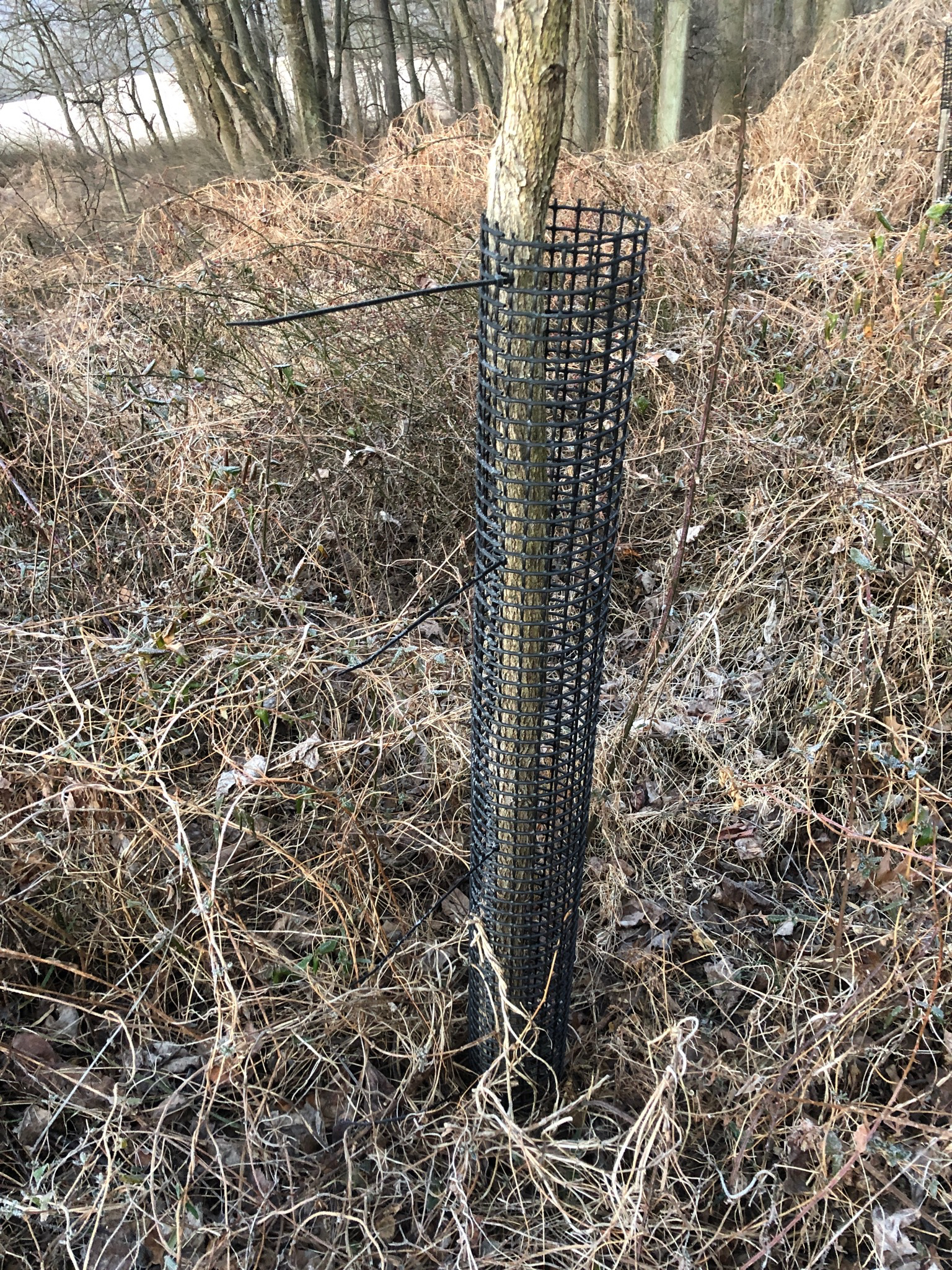Crow’s Nest: February projects
By Daniel Barringer, Preserve Manager.

We’ve had an unusually busy winter, and we haven’t even had the frozen ground needed to mow our meadows yet. We will have a big announcement to make soon—part of the reason we’ve been extra busy—so stay tuned here.
One of the projects intern Alec has taken on is “rock work”—moving rocks to improve the pathway through some of our rockiest woods (below). We hope that you’ll find it a little easier to pick your way through here on the red trail in the Deep Woods than it was before.

You may have noticed fresh gravel on the parking lot. This improves the appearance but more importantly will help with drainage. Of course gravel is notoriously difficult to plow, so if we end up getting some snow I won’t be able to help but gouge the surface. I usually spend as much time putting gravel back after plowing as I did plowing the snow.

Our deer population is still low following 2018’s outbreak of Epizootic Hemorrhagic Disease, but this does offer a unique opportunity for the forest to regenerate. Alec spent some time fixing the deer exclosures that were first installed here in 2001. We had used white oak for the corner posts, and after almost 20 years they were beginning to rot. Alec replaced some of them with metal posts and re-tightened the netting which keeps deer out. These three 10 x 10 meter plots around the preserve are demonstration sites for the impact of deer and help us gauge the impact deer are having on the understory of the forest.
Elsewhere on the preserve we have been adding tubes of semi-rigid plastic netting around trees we want to protect, so that when the deer population rebounds these trees’ trunks will not be torn up by bucks. I like these better than the solid tubes we use when planting seedlings because mice are less likely to build nests in them (and then nibble on and girdle the trees) and these tube cages are bigger so they can be removed later when the tree is larger and more robust.

It is important to note than whenever trees are planted in tube tree shelters, the work is just beginning. The recent massive tree planting (12,500 trees) at our Bryn Coed Preserve is no exception. Darin and Caleb and others will be spending many hours each year over the next decade mowing and weeding around the tubes, straightening the tubes, replacing trees that die, and when successful growth is achieved, removing the shelters. We know it works—just look at Binky Lee Preserve where we spent several days each year planting trees in the early 1990’s, and where Darin and others maintained those plantings until the trees matured.
Not all our work involves planting trees; sometimes we’re cutting them down. One of the unique habitats at Crow’s Nest is a tussock sedge wetland which requires some management to keep it from undergoing succession to a red-maple swamp. The tussock sedge habitat supports rare species that the red maple swamp does not, so we occasionally cut down red maples there to let in more sunlight. Without full sun the tussocks die and become hillocks of moss—pretty, but not significant habitat.
I use this project for training each year with our interns so that they can learn safe felling techniques of the kind taught in Soren Erikson’s “Game of Logging” course which many of our staff have taken. Below, Alec is doing a plunge cut into a red maple, behind the face cut, thereby creating a hinge that will guide the tree safely to the ground. When he is ready, he will release the tree by cutting the strap of wood that he has left behind the plunge cut. Knowing what to do is easier than physically doing it, and the only way to learn is by practice. In the foreground is the tussock sedge whose habitat we are trying to maintain.

For a very cool look at this work (he makes it look far more exciting than it is) see professional photographer Ed Cunicelli’s photo essay about a day at Crow’s Nest Preserve last year here.
As I’ve said many times before, I prefer my trees alive: vibrant, reaching for the sky, shading us and freshening our air. But the skills of taking a tree down safely are necessary and we take great pride in doing it well.
Since the ground has not been frozen, and we continue to have heavy rains every week, we also have not started the pond dam removal project that we planned this winter. We’ll keep you up to date on that project when it begins.
We’re also starting our annual easement monitoring; by the time we make significant progress on that, spring will already be here!
